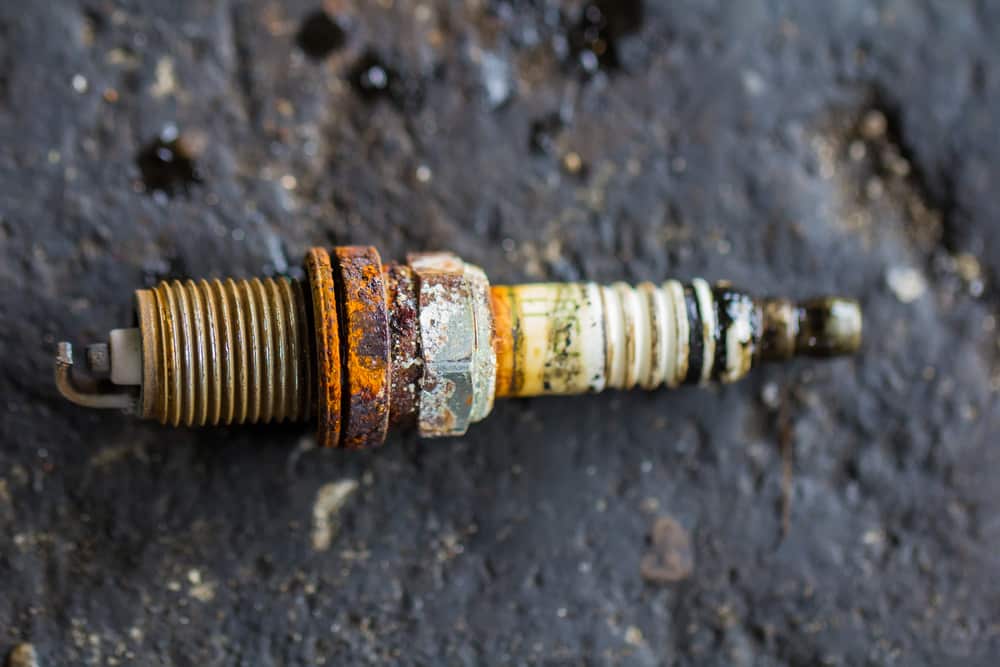In the intricate symphony of an engine, spark plugs play a pivotal role in igniting the combustion process, ensuring smooth operation and optimal performance. However, oil incursion into the spark plugs can disrupt this harmonious function, leading to various issues and potentially compromising the engine’s efficiency. If you suspect oil in your spark plugs, understanding how to address the situation is crucial for maintaining your vehicle’s health and driving experience. In this comprehensive guide, we will delve into the causes of oil in spark plugs, explore effective solutions, and provide expert insights to empower you in restoring your vehicle’s peak performance.

Image: micdot.com
Understanding the Issue: Oil in Spark Plugs
To effectively address oil in spark plugs, it’s essential to understand its underlying causes. The presence of oil in the spark plug’s combustion chamber can stem from several issues:
-
Worn Valve Stem Seals: As an engine ages, the valve stem seals can deteriorate, allowing oil to leak into the combustion chamber. This oil can then find its way to the spark plugs, leading to oil fouling.
-
Damaged Piston Rings: Piston rings play a critical role in sealing the combustion chamber. If these rings become damaged or worn, it can cause excessive oil consumption, potentially resulting in oil buildup in the spark plugs.
-
Incorrect Oil Level: Overfilling the engine with oil can lead to excess oil accumulating in the engine’s components, including the spark plugs.
-
Faulty PCV Valve: The positive crankcase ventilation (PCV) valve regulates pressure in the engine’s crankcase. A malfunctioning PCV valve can cause excessive pressure buildup, forcing oil into the combustion chamber and onto the spark plugs.
Addressing Oil in Spark Plugs: A Step-by-Step Approach
Once you have identified the cause of oil in spark plugs, it’s time to take action. Here’s a step-by-step approach to effectively resolve the issue:
-
Inspect the Spark Plugs: Remove the spark plugs and carefully inspect them for oil buildup. If there’s significant oil present, it’s a clear indication that oil is entering the combustion chamber.
-
Diagnose the Underlying Cause: Determine the underlying cause of oil incursion based on the symptoms and visual inspection. Check for worn valve stem seals, damaged piston rings, incorrect oil level, or a faulty PCV valve.
-
Resolve the Root Problem: Address the identified root cause. This may involve replacing valve stem seals, repairing or replacing piston rings, adjusting the oil level, or replacing the PCV valve.
-
Clean the Spark Plugs: If the spark plugs are fouled with oil, it’s important to clean them thoroughly. Use a spark plug cleaner and brush to remove any oil deposits.
-
Inspect and Replace Spark Plugs: Once the spark plugs are cleaned, inspect them for any signs of damage or wear. If necessary, replace the spark plugs with new ones to ensure optimal performance.

Image: mechanicbase.com
How To Fix Oil In Spark Plugs
Expert Insights for Optimal Spark Plug Health
To maintain optimal spark plug health and prevent oil incursion, consider these insights from automotive experts:
-
Regular Maintenance: Routine maintenance, including regular oil changes and spark plug inspections, can help detect potential issues early on and prevent oil buildup in spark plugs.
-
Use High-Quality Oil: Using high-quality engine oil specifically formulated for your vehicle can reduce oil consumption and minimize the risk of oil leaking into the combustion chamber.
-
Monitor Oil Consumption: Keep a close eye on your engine’s oil consumption. Excessive oil consumption can indicate underlying issues that need attention.
-
Professional Diagnosis: If you suspect oil in spark plugs or are unsure of the underlying cause, consult a qualified mechanic for an accurate diagnosis and professional repair.
In conclusion, understanding how to fix oil in spark plugs is crucial for maintaining your vehicle’s performance and longevity. By identifying the root cause, implementing targeted solutions, and adhering to expert recommendations, you can effectively resolve oil incursion issues and ensure optimal engine operation. Remember, regular maintenance, proper oil usage, and prompt attention to potential problems play a significant role in preventing oil in spark plugs, ensuring a smooth and efficient driving experience for years to come.